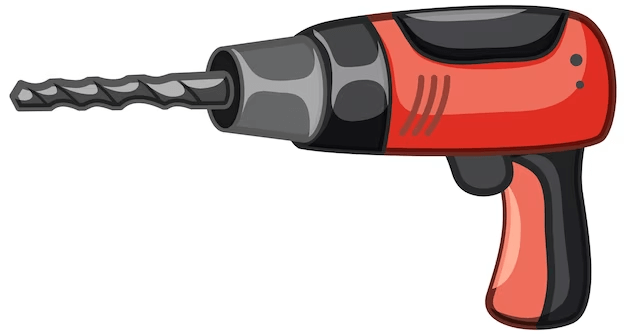Updated May 30, 2023
About Drilling Machine
Drilling Machine is a utility tool that helps make cylindrical holes in metal, wood, or any other material. These are the most basic, moderately priced, and accurate machine tools in all manufacturing operations and tool rooms. It is equipment that uses a rotating instrument called a drill bit or a twist drill to make holes in a workpiece. Drilling is essentially a hole-creation technology.
How does it Work?
It works on the mechanism that the rotating edge of the tool (drill bit) exerts a large force on the workpiece, creating holes in it. The material from the workpiece gets removed in the form of small chips that lodge out by shearing forces, thus creating a hole or a bore.
Components of Drilling Machine
- Base: The base of a drilling machine usually supports the machine, and mounting the base in case of large machines is to the floor, or a person can simply hold it in hand.
- Column: It is a cylindrical structure that acts as a supporting arm that connects the drill head and a sliding table.
- Arm: Positioned at the top of the column, it supports the spindle and drill chuck. It is only present in larger machines instead of smaller drilling machines.
- Spindle: A set of bearings connects the chuck to the electric motor.
- Chuck: Positioned on the spindle to hold the drill jig in place during the drilling operation.
- Drill Head: A feed, feeding mechanism, and drill chuck combinedly known as a drill head.
- Worktable: A column-mounted table that helps to adjust the workpiece in vertical and horizontal directions.
- Feeding Mechanisms: It controls the rate of the machine while lowering the material. They include manual and automatic feeding using an electrical motor.
- Electric Motor: Provides rotation to the drill bit or drilling tool.
Types of Drilling Machines
- Portable or Drilling Machine: A compact machine with a universal motor that helps to drill holes in a workpiece in any position. It is easy to carry the machine anywhere because it is smaller than other drilling machines.
- Radial Drilling Machine: It consists of a drill spindle in the tool head and saddle that projects itself rotating over the workpiece. Designed primarily for drilling heavy and large workstations, accommodating varying heights, the change in the table is optionable. It lets the operator spin the spindle directly on the workpiece rather than move the part to the tool.
- Sensitive or Bench Drilling Machine: This machine makes small holes faster and typically comprises a base, worktable, spindle, drill head, driving mechanism, and column.
- Gang Drilling Machine: It has several drill heads and individual columns on a single base. This machine is for drilling, reaming, counterboring, and tapping by simply moving it back and forth.
- Computer Numerical Control (CNC) Drilling Machine: A CNC drilling machine uses rotating cutting tools to make the holes in a workpiece. The program controls the feed, speed, and table location.
Advantages of Drilling Machine
- High Speed: The main advantage of the drill machine is that creation of holes and performing other drilling operations in the workpiece is easier at a faster rate.
- Greater Flexibility: Modern drilling machines are highly flexible as they have numerous automatic spindles to drill holes at any angle, among other qualities.
- Less Maintenance and Longer Life: This machine has a very low maintenance cost and long life. One can use it for a longer time with very little upkeep.
Disadvantages of Drilling Machine
- Workpiece of Limited Size: One can use the it on a workpiece of limited size. The manipulation of a very large workpiece cannot possible to perform drilling.
- Oversized Hole: Chances of forming an oversized hole is huge due to a spindle failure or an uneven angle/length of the cutting blades.
- Drill Failure: The drill may break if it becomes dull, chips have clogged the flute, there is a high feed rate, and inadequate drill and work clamping happens.
Uses
- This machine tool can execute many operations, including reaming, boring, counter-boring, tapping, and many others, making it useful in many applications.
- They are used in every manufacturing industry to make holes in workpieces as needed.
- This is also used in carpentry to drill holes in wood and to repair wood structures.
- Screwing and fixing is possible with hand drills or portable drills.
- They are majorly found used in building sites and the glass industry.
Final Thoughts
A Drilling Machine is a necessary instrument for various industrial and residential applications. It helps to make holes in various materials such as metal, wood, plastic, and concrete. This machine is available in various designs as per drilling requirements. Drilling machines shape or expand existing holes and generate threads in various materials. Several precautions should are must while operating this machine.
Recommended Articles
We hope that this EDUCBA information on the “Drilling Machine” was beneficial to you. You can view EDUCBA’s recommended articles for more information –

